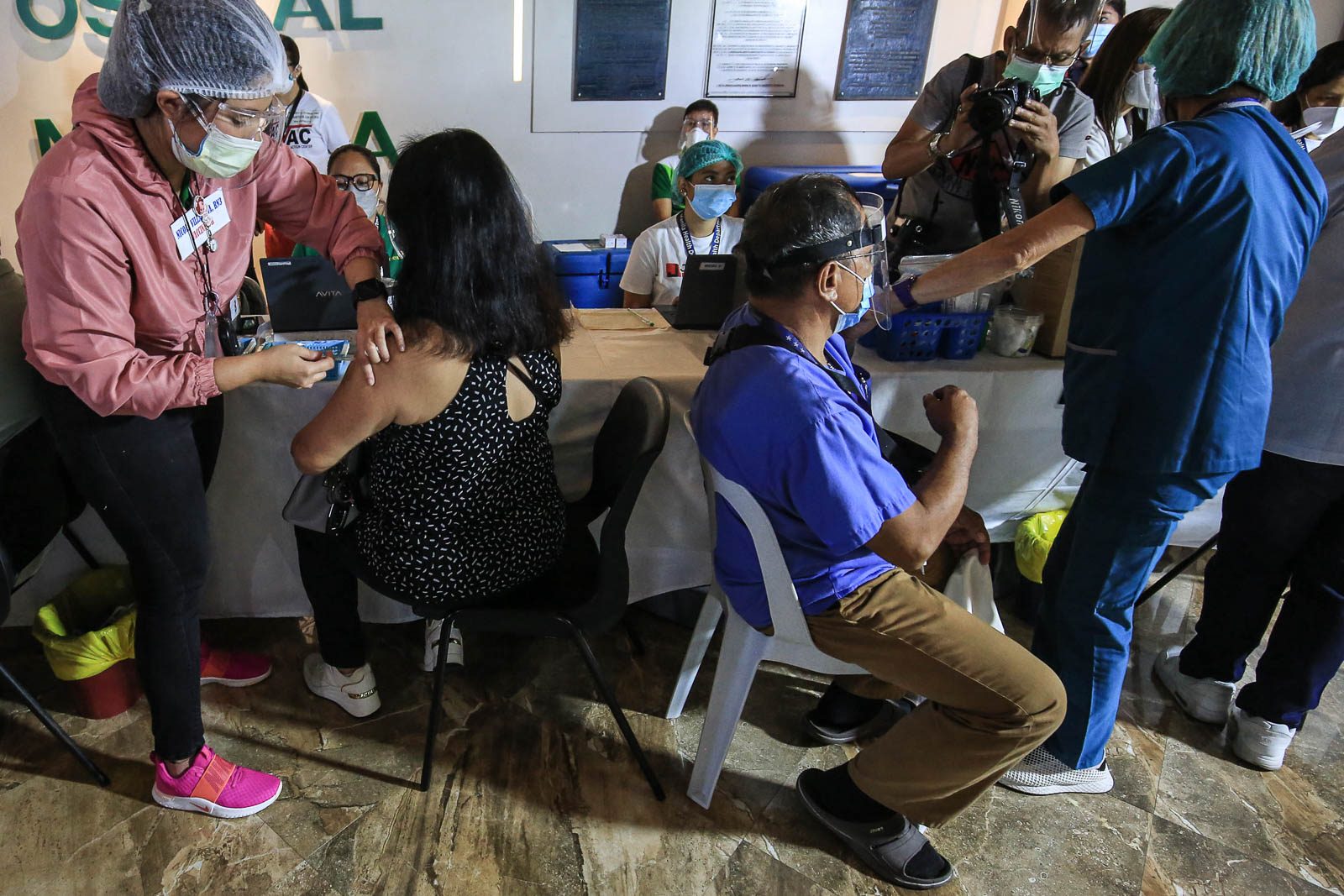SUMMARY
This is AI generated summarization, which may have errors. For context, always refer to the full article.

A year after the pandemic was declared, the Department of Health (DOH) said that the Philippines is now “more prepared” to handle the public health crisis amid the surge in COVID-19 cases.
“Sa tingin namin (We think) we have improved so much,” Health Undersecretary Maria Rosario Vergeire said in a virtual press briefing on Friday, March 12, and cited her basis for the assessment.
She said that from July to August 2020, when COVID-19 cases spiked in the country, hospitals got overwhelmed as the health system was not used to handling sudden surges in cases and had limited treatment options.
Now, she said, doctors have more options to treat COVID-19 patients. She also noted that the Philippines was able to maintain a case fatality rate of 2%, which suggests that the country’s health workers are now able to manage critical cases.
As of March 8, the Philippines’ case fatality rate is 2.09% – below the global case fatality rate of around 2.22%, based on data from the World Health Organization.
Rappler monitoring showed that COVID-19 deaths in the country spiked in mid-June 2020, and logged the highest single-day death of toll of 85, so far, on August 11, 2020. It had been on a downward trend trend, with a slight uptick in the early months of 2021.
Hospitals ‘more prepared’
In terms of health systems capacity, Vergeire said that allocation of COVID-19 beds, both in private and public hospitals, has improved as the government implemented the “One Hospital Command” system – a more robust referral system between hospitals to avoid overwhelming critical care facilities.
The command system was first put in place in July 2020, when the Philippines saw a surge in cases that nearly crippled the country’s health system.
“We were also able to increase the beds for our temporary treatment and monitoring facilities and we have now the One Hospital Command Center, which is very important because we’re able to determine who goes to hospitals or who goes to isolation facilities,” Vergeire said in a mix of English and Filipino.
“Kapag titingnan natin noong tayo ay nagsisimula ay hindi natin ito nagagawa kaya medyo na-o-overwhelm ang ibang hospital pero ‘yung iba naman ay hindi,” she added. (If you look back to when we were just starting, we were not able to do it, that’s why there were hospitals that were nearly overwhelmed and others were not.)
DOH data monitored by Rappler showed the number of hospital admissions quickly increased from February 21 to March 6, 2021, after remaining steady from the start of the year to the third week of February.
As of March 6, of the 149 hospitals catering to COVID-19 patients in Metro Manila, 115 were still considered to be in the “safe” zone, with less than 60% occupancy, while 11 other hospitals were under a “moderate” classification (60% to 70% occupancy), and 19 “high-risk” (70% to 85% occupancy).
Aside from “improved” health systems, Vergeire also noted that the country now has over 200 COVID-19 testing hubs from only one – the Research Institute for Tropical Medicine – in 20202.
“Looking at all of these, we can say that we have prepared our health system. Although, hindi naman natin sinasabi na perpekto na pero (we’re not saying it’s already perfect but) looking at that after one year, I think we are now more prepared to handle cases of COVID-19,” she said.
The pandemic has claimed over 12,000 lives in the Philippines and ushered in the country’s worst recession since World War II. The Philippines is projected to suffer the worst economic downturn in Southeast Asia.
On Thursday, the DOH reported 3,749 new COVID-19 cases, the highest since September 19, 2020. Thursday’s caseload pushed the Philippines’ total infections to 607,048.
The positivity rate – or the percentage of all COVID-19 tests performed that turned out positive – also hit 11%, based on the DOH bulletin. It is the highest since September 9, 2020, when 11.21% was recorded.
The WHO recommends that the positivity rate remain below 5% for at least two weeks before governments can consider reopening the economy. (READ: Duterte to reopen economy when most Filipinos have access to COVID-19 vaccine)
While the Philippines’ figures are not as alarming as the pandemic situation in the US, it lags far behind neighbors like Vietnam that has kept its total cases below 3,000 and where only 35 people have died of the disease. (READ: Duterte gov’t says it did ‘excellent’ job handling COVID-19 pandemic)
The Philippines was also the last country in Southeast Asia to start legally rolling out COVID-19 vaccines, with donated doses from China and the COVAX facility. – Rappler.com
Add a comment
How does this make you feel?
There are no comments yet. Add your comment to start the conversation.